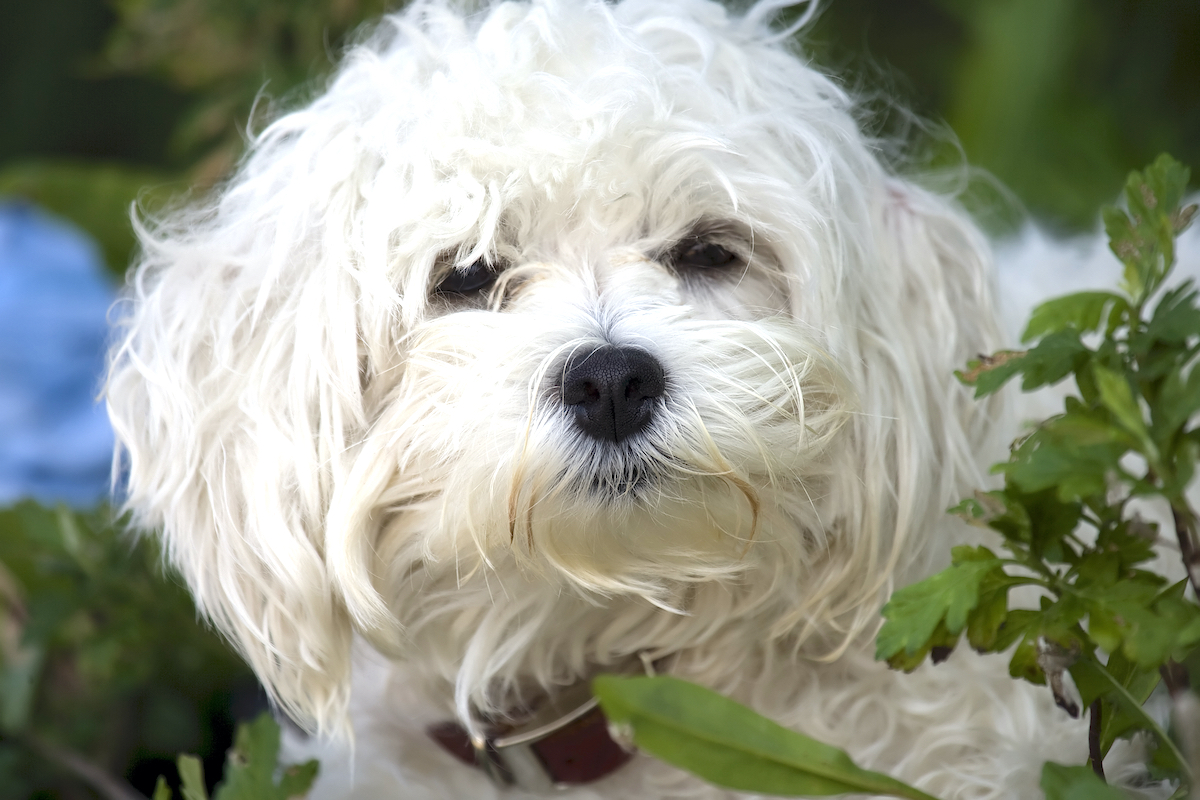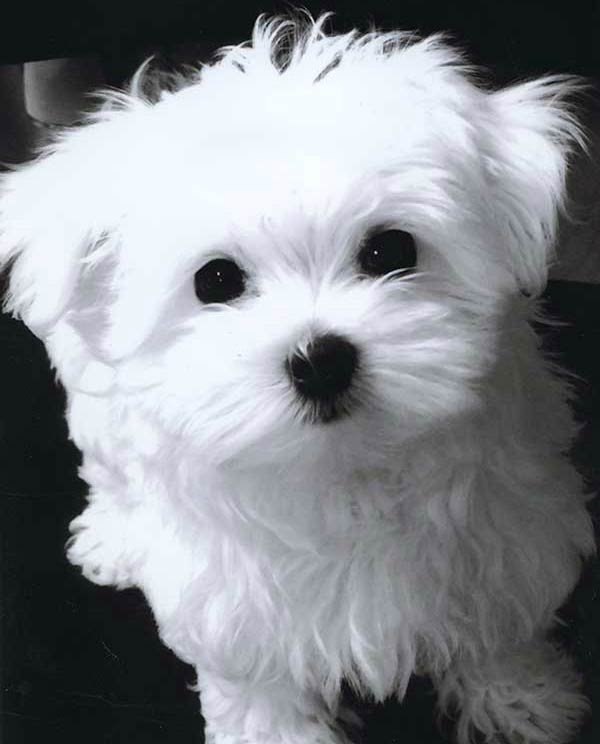Have you ever wondered if a Maltese dog has curly hair? Well, prepare to be surprised because despite their luxurious and voluminous coat, Maltese dogs actually have straight hair! Unlike other breeds known for their curly locks, such as the Poodle or Bichon Frise, the Maltese is known for its long, silky, and straight hair. This unique characteristic adds to the breed’s elegance and gives them a distinctive appearance.
The Maltese breed’s straight hair has a fascinating history. These adorable dogs originated from the Mediterranean island of Malta, where they were favored by royalty and aristocrats for centuries. Their straight hair was considered a symbol of purity and nobility in ancient times. Today, Maltese dogs are still appreciated for their beautiful and manageable coat, as it does not require extensive grooming like many other curly-haired breeds. Their straight hair has become one of their defining features and contributes to their charm and grace. So, if you’re looking for a dog with a silky, flowing coat, the Maltese might be the perfect choice for you.

Does a Maltese Have Curly Hair?
Are you considering getting a Maltese as a pet? One of the questions that often come up is whether a Maltese has curly hair. In this article, we’ll explore the coat characteristics of a Maltese and understand the different types of hair they can have. Whether you’re a new pet owner or considering adding a Maltese to your furry family, read on to discover more about their beautiful coats.
The Coat of a Maltese
When it comes to the coat of a Maltese, it is important to note that they have hair instead of fur. This means that their coat is more similar to human hair and requires regular grooming. The hair of a Maltese is known for being long, silky, and luxurious, giving them their signature non-shedding characteristic. However, the texture of their hair can vary, and this is where the question of whether a Maltese has curly hair comes into play.
The Different Hair Types of a Maltese
1. Straight Hair: Some Maltese dogs have straight hair that falls naturally without any curls or waves. This type of hair is easier to maintain and typically requires less grooming. Maltese with straight hair still have a soft and silky coat, offering a beautiful and elegant appearance.
2. Wavy Hair: Another type of hair that a Maltese can have is wavy hair. This means that their hair has slight waves or curls, adding a bit of texture to their coat. The waves in a Maltese’s hair can vary in intensity, with some dogs having more pronounced curls than others. It is important to note that while a Maltese with wavy hair may require a bit more grooming to prevent tangling, the waves can also give them a unique and adorable look.
3. Curly Hair: While it is less common, some Maltese dogs can indeed have curly hair. This type of hair is characterized by tight coils or ringlets that cover their entire body. Maltese with curly hair require more specialized care and grooming to maintain their curly locks. Regular brushing and occasional trimming may be necessary to keep their curly coat looking its best.
Grooming Tips for Different Hair Types
Regardless of the type of hair your Maltese has, proper grooming is essential to keep their coat healthy and beautiful. Here are some grooming tips based on different hair types:
- For Maltese with straight hair: Regular brushing and occasional baths will help keep their coat clean and free of tangles. Consider using a detangling spray or conditioner to make brushing easier, and trim their hair as needed to maintain the desired length.
- For Maltese with wavy hair: Regular brushing is important to prevent matting and tangling. Consider using a slicker brush to gently detangle their waves and apply a leave-in conditioner to enhance the texture and manageability of their hair.
- For Maltese with curly hair: It is crucial to establish a regular grooming routine for Maltese with curly hair. Brush their coat daily to prevent matting, and consider using a wide-toothed comb to detangle their tight curls. Regular professional grooming may also be necessary to keep their curly hair in top shape.
Common Questions About Maltese Coats
Here are some common questions that pet owners have about the coats of Maltese dogs:
1. Can you straighten a Maltese’s curly hair?
No, it is best to let a Maltese’s hair natural texture shine. Trying to straighten their curly hair can cause damage and may alter their coat’s natural appearance.
2. How often should you bathe a Maltese?
Maltese dogs generally need to be bathed every three to four weeks. However, it’s essential to consider their individual coat and skin needs, as some Maltese may require more frequent or less frequent baths.
3. Do Maltese dogs shed?
No, Maltese dogs do not shed like other breeds. Their hair grows continuously, similar to human hair, and requires regular grooming to prevent matting.
4. Can a Maltese’s hair change over time?
Yes, the texture and appearance of a Maltese’s coat can change as they grow and mature. Puppies may have different hair characteristics compared to adult Maltese, and occasional changes in texture can occur throughout their lives.
Conclusion:
Whether your Maltese has straight, wavy, or curly hair, one thing is certain: their beautiful coat makes them truly unique and irresistible. Understanding the different types of hair and their specific grooming needs is essential to keeping your Maltese looking their best. Embrace their natural hair texture, and with regular care and grooming, your Maltese will always be ready to turn heads.
Key Takeaways: Does a Maltese have curly hair?
- Maltese dogs generally have long, silky hair.
- Their hair is not naturally curly, but it can become curly when grown long.
- Regular grooming is necessary to maintain a Maltese’s hair and prevent matting.
- Some Maltese may have slight waves in their hair, but it is not typically curly.
- Curly-haired Maltese are often the result of specific grooming techniques or styling.
Frequently Asked Questions
In this section, we will answer some common questions related to the Maltese breed and their hair. Find out more about their coat characteristics and grooming needs.
1. Why are some Maltese dogs’ hair curly?
The Maltese breed is known for its long and silky hair, which typically grows straight. However, some individual dogs may have hair that appears curly. This is usually due to genetics or crossbreeding with other curly-haired breeds. While it is not a standard trait for the Maltese, these curly-haired pups are still adorable and make wonderful companions.
If you’re looking for a Maltese with straight hair, make sure to research reputable breeders who breed for the specific coat type you desire. Remember that coat texture can vary even within the same litter.
2. How can I prevent my Maltese’s hair from becoming tangled and matted?
Prevention is key to keeping your Maltese’s hair tangle-free and mat-free. Regular grooming is essential. Daily brushing with a quality slicker brush or comb is recommended to remove any tangles and prevent matting. Be gentle during the process to avoid causing discomfort to your furry friend.
In addition to brushing, it’s important to keep your Maltese’s hair clean and dry. Regular baths using a mild dog shampoo will help keep their coat in good condition. Ensure the fur is thoroughly dried after bathing to prevent dampness, which can contribute to tangling. Professional grooming sessions every few weeks can also help maintain your Maltese’s beautiful coat.
3. Should I trim my Maltese’s hair short?
The decision to trim your Maltese’s hair short is a personal choice. While it can be a practical option for some owners, a shorter cut may not be ideal for displaying the breed’s iconic long, flowing coat. The Maltese coat provides protection from the sun, cold temperatures, and other environmental factors.
If you do decide to trim your Maltese’s hair, be sure to consult with a professional groomer who is experienced with the breed. They can help you choose a suitable length that still maintains the Maltese’s overall appearance and offers necessary coat protection.
4. How often should I bathe my Maltese to keep their hair clean?
The frequency of bathing your Maltese will depend on their individual needs. Generally, an average of once every three to four weeks is sufficient to keep their hair clean and healthy. Over-bathing can strip the natural oils from their coat, leading to dryness and potential skin issues. Regular brushing and spot-cleaning can help maintain cleanliness between baths.
If your Maltese spends a lot of time outdoors or gets dirty frequently, you may need to bathe them more often. However, always use a mild dog shampoo specifically formulated for their sensitive skin to avoid any irritation.
5. Is it possible to change my Maltese’s hair texture from curly to straight?
The texture of a Maltese’s hair is determined by genetics and cannot be changed. If your Maltese has naturally curly hair, it is unlikely that you can permanently alter its texture. While certain grooming techniques, such as blow-drying and straightening, may temporarily give the appearance of straight hair, they won’t alter the hair at a structural level.
Remember to embrace and love your Maltese just the way they are, whether their hair is straight or curly. Their unique characteristics and adorable personality are what truly make them special!

How we groom our curly haired maltipoo
In this article, we explored the concept of writing a succinct wrap-up using first-person point of view and a professional tone. It is important to keep in mind that the tone should be suitable for a 13-year-old reader, using simple language and avoiding jargon.
To achieve clarity, we should avoid starting with or using the phrase “In conclusion.” Instead, we should focus on writing concise sentences with no more than 15 words each, ensuring that each sentence presents a single idea.
By following these guidelines, we can help the reader leave with a clear understanding of the article’s key points in just two paragraphs.
